Grower’s soils improve and inputs reduce with regen approach
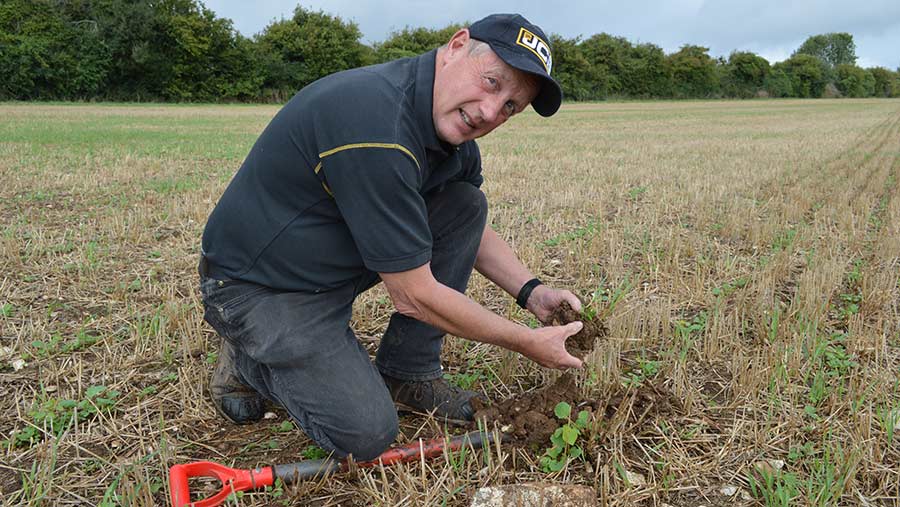 David Miller in his OSR crop © MAG/David Jones
David Miller in his OSR crop © MAG/David Jones Hampshire grower David Miller has seen the organic matter of his chalky light soils rise by nearly 1% over the past four years by the use of cover crops and direct drilling without adding any farm manures.
David, who was arable Soil Farmer of the Year in 2022, tested his soils this year and saw the organic matter had risen 0.75% to 4.75-5% from four years ago due to the regenerative farming practices being following for more than a decade.
“The rise in organic matter is largely due to the cover crops and the effect of the roots being left in the soil,“ he told Farmers Weekly at an AHDB Strategic Cereal Farm South open day in June.
See also: How Hampshire grower became Soil Farmer of the Year
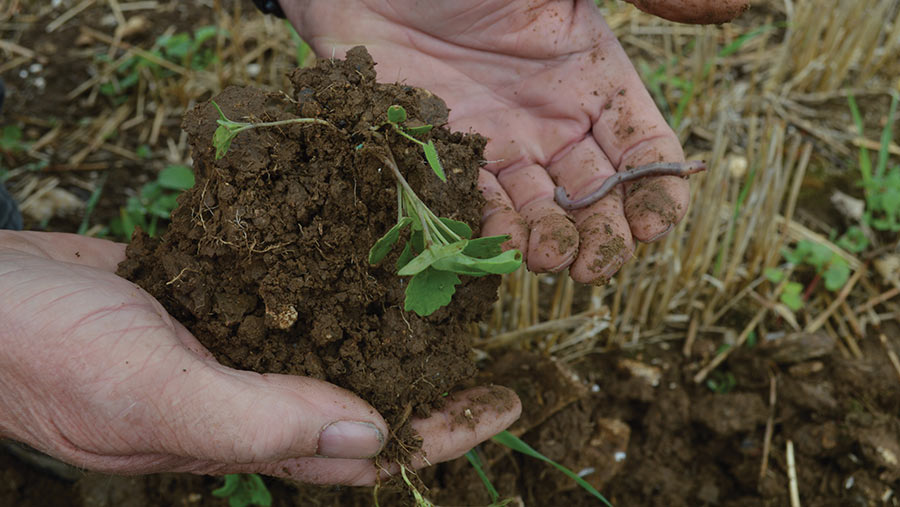
© MAG/David Jones
Cover crops
He is growing 200ha of covers crops on the 750ha he farms based at Folly Farm, North Waltham, just south-west of Basingstoke.
He manages four farms as Wheatsheaf Farming for four different landowners on either side of the M3 on largely light loamy arable soils over chalk, with plenty of flints and clay caps.
David started his regen journey in 2010 when he saw yields plateauing and introduced cover crops to improve soil fertility and then realised that no-tillage was the next obvious step.
Chopping most of his cereal straw and not moving soil by direct drilling, firstly with a Cross Slot drill from 2015 and then switching in 2022 to a 6m Horizon disc drill, helped his soil’s organic matter levels rise as well as from the effect of the cover crops.
He also found that when testing his soils this year that the soil indices for phosphate and potash were at good levels, despite not applying any P and K for the past eight to nine years.
Lots of roots
The focus of his cover crops is for species which give lots of roots – meaning sunflowers, phacelia, vetch, crimson clover, buckwheat, beans and lupins.
He looks to roll them in any frost to break the stems and then give them an application of glyphosate in mid-February to complete the destruction of the cover crop.
The cover crops help reduce any nitrogen leaching over winter, cut any soil erosion as well as helping increase organic matter.
Improving health of his soils has helped him reduce inputs and he is in the fourth year of growing low-input spelt wheat.
This season he is growing a three-way blend of winter wheat varieties with no fungicides or insecticides and with a low rate of nitrogen fertiliser.
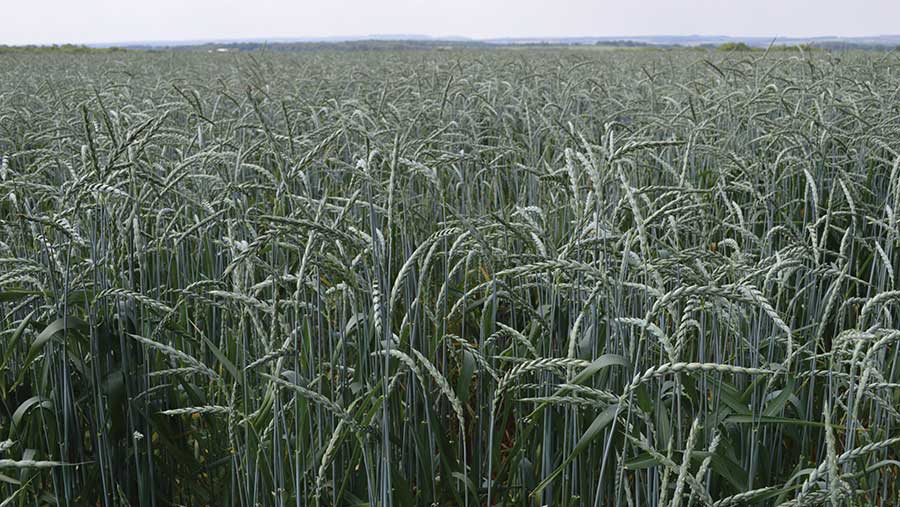
David Miller’s spelt wheat crop © MAG/David Jones
He is growing 28ha of spelt wheat which has given him an average yield of 7.5t/ha in the past and when the grain is fully threshed out gives a yield of 5t/ha.
But he grows this with only 90kg/ha of nitrogen, no fungicide and one application of the plant growth regulator chlormequat.
The spelt wheat is milled to produce a flour with a more digestible form of gluten than other wheat, some of which is sold at the farm.
The profitability of the spelt is similar to winter wheat with the lower yield offset by the lower inputs and higher price for the grain.
The variable costs of spelt are about £450/ha compared with £695/ha for Extase wheat.
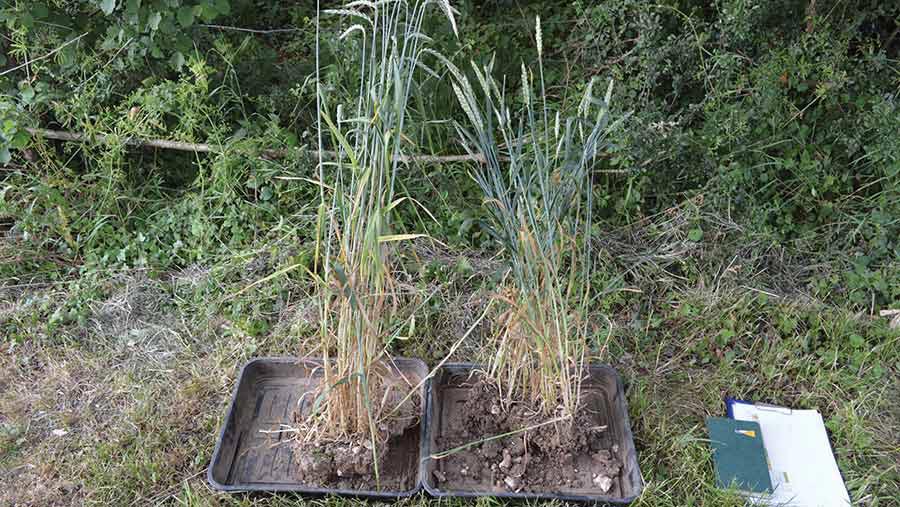
Spelt wheat (left) and traditional wheat (right) © MAG/David Jones
Bad year for septoria
He grows 240ha of winter wheat – largely Extase and Graham – and the better soil health has helped him grow 9t/ha wheat crops with only two fungicides and still keep the top two leaves clean of disease in what has been a very bad year for septoria.
His three-way mix of Graham, Dawsum and Champion varieties grown this year on a limited area has had only 120kg/ha of nitrogen, and no fungicide or insecticide applied to the wheat crop.
He is in his fourth year of growing a companion crop with oilseed rape and he has not lost any rapeseed this season using conventional farm-saved seed of the varieties Aardvark and Campus and drilled in early August.
He drills at 5kg/ha of rapeseed with 5kg/ha of buckwheat, 2kg/ha of crimson clover and 2kg/ha of berseem clover at a total cost of £32/ha.
The companion crop helps the establishment of the oilseed rape by disguising it from potential cabbage stem flea beetle predators.
The buckwheat in the companion crop mix is killed by the first frosts, while a late autumn herbicide of propyzamide + aminopyralid (Astrokerb) takes out the clovers.
Under the companion crop element of Sustainable Farming Incentive he can receive £55/ha for growing this companion crop with his oilseed rape crop.
The land he farms follows the first four of the five principles of regenerative farming: don’t disturb the soil; keep the soil surface covered; keep living roots in the soil; and grow a diverse range of crops; but he has not implemented the fifth – bringing grazing animals back to the land.
Introducing livestock would move him faster along the route towards regenerative farming, but he is insistent on keeping his system simple and profitable, with low labour and machinery costs.
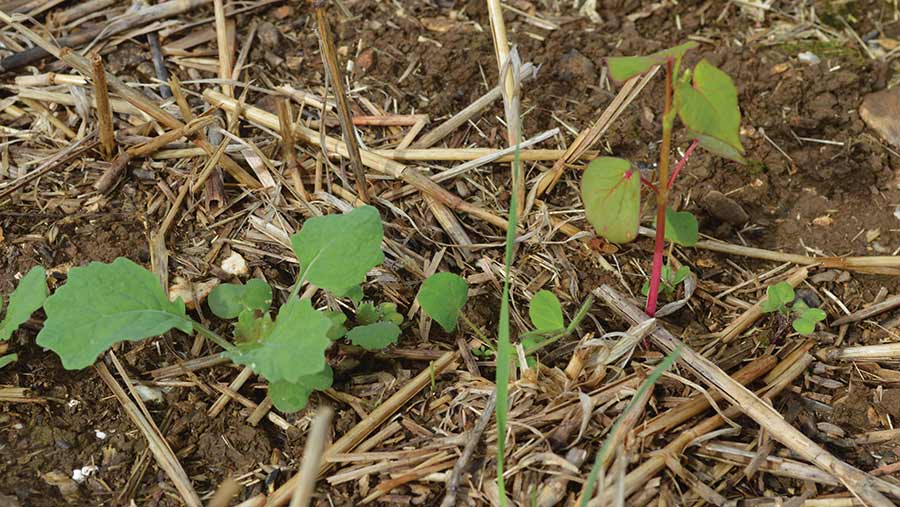
Buckwheat companion crop with oilseed rape © MAG/David Jones
Award winner
David Miller was the joint winner of the 2022 Soil Farmer of the Year award along with Herefordshire mixed farmer Billy Lewis.
The award is organised by the Farm Carbon Toolkit and Innovation for Agriculture – a consortium of English agricultural societies – and is sponsored by agronomy group Hutchinsons and Cotswold Grass Seeds.
David was Farmers Weekly’s Arable Farmer of the Year in 2015, and is the AHDB’s current Strategic Farm South for the six-year period 2021-27.
See the shortlist for Farmers Weekly Awards 2023.

